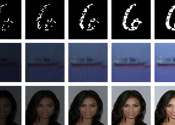Design as a noun informally refers to a plan or convention for the construction of an object or a system (as in architectural blueprints, engineering drawing, business process, circuit diagrams and sewing patterns) while “to design” (verb) refers to making this plan. No generally-accepted definition of “design” exists, and the term has different connotations in different fields (see design disciplines below). However, one can also design by directly constructing an object (as in pottery, engineering, management, cowboy coding and graphic design).
More formally, design has been defined as follows.
Another definition for design is a roadmap or a strategic approach for someone to achieve a unique expectation. It defines the specifications, plans, parameters, costs, activities, processes and how and what to do within legal, political, social, environmental, safety and economic constraints in achieving that objective.
Here, a "specification" can be manifested as either a plan or a finished product and "primitives" are the elements from which the design object is composed.
With such a broad denotation, there is no universal language or unifying institution for designers of all disciplines. This allows for many differing philosophies and approaches toward the subject (see Philosophies and studies of design, below).
The person designing is called a designer, which is also a term used for people who work professionally in one of the various design areas, usually also specifying which area is being dealt with (such as a fashion designer, concept designer or web designer). A designer’s sequence of activities is called a design process. The scientific study of design is called design science.
Designing often necessitates considering the aesthetic, functional, economic and sociopolitical dimensions of both the design object and design process. It may involve considerable research, thought, modeling, interactive adjustment, and re-design. Meanwhile, diverse kinds of objects may be designed, including clothing, graphical user interfaces, skyscrapers, corporate identities, business processes and even methods of designing.









